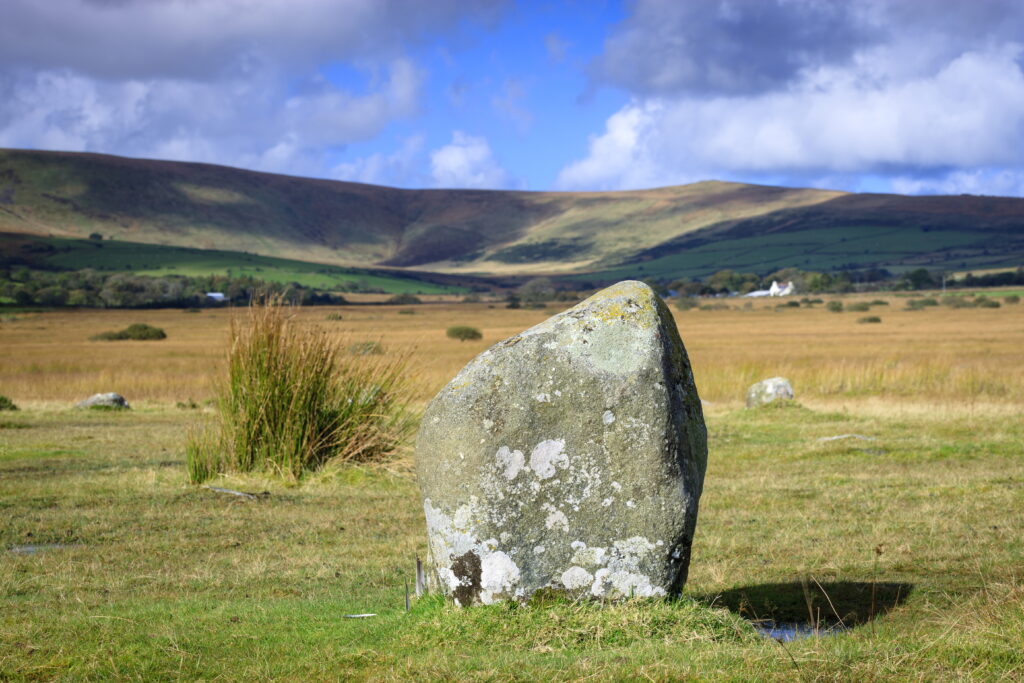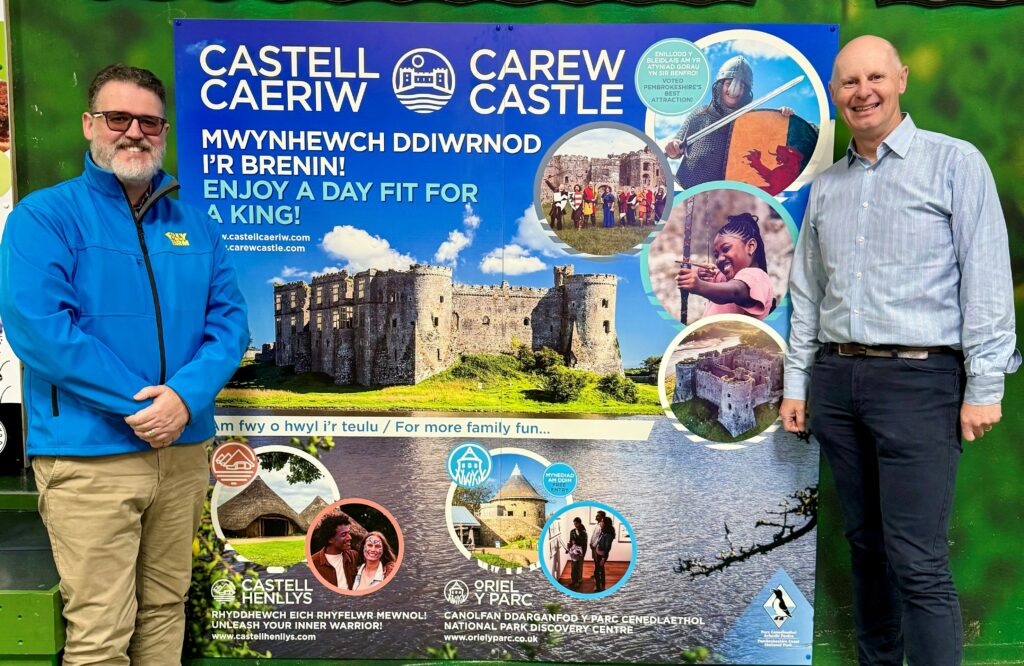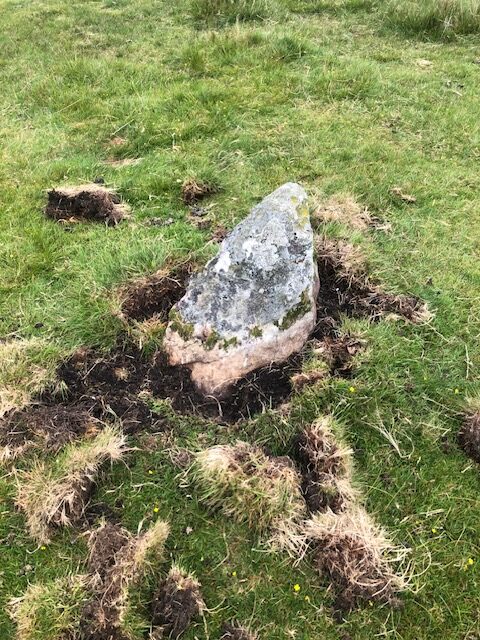The Pembrokeshire Coast National Park Authority (PCNPA) in partnership with the Pembrokeshire Coast National Park Trust (PCNPT) has been awarded funding from the National Lottery Heritage Fund and Sackler Trust to develop interpretation content for three scheduled monuments in the National Park.
1. Background to the brief
As part of the development and production of content, it is expected that engagement will take place with local communities to determine exactly what they would like to be included in the production. As part of this engagement process, it is expected that events will take place to present the content to these communities and wider public and feedback from these events will inform the final content produced.
You can read the full brief below or download the full brief in PDF form. You can also download a separate Invitation Response Form.
2. The Scheduled Monuments included in this work
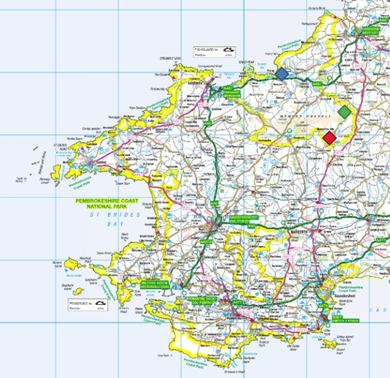
Figure 1: Aerial map showing location of the three scheduled monuments in the Pembrokeshire Coast National Park (indicated by red, green and blue diamonds).
The development and production of interpretation content will focus on Gors Fawr Stone Circle (indicated by the red diamond (see figure 1)), Foel Drygarn Camp (indicated by the green diamond (see figure 1)) and the Old Castle (indicated by the blue diamond (see figure 1)).
PE117 Gors Fawr Stone Circle, Mynachlog-ddu (SN 13476, 29414)
The monument is located on the south side of the Preseli range within the Gors Fawr bog and includes sixteen stones arranged in the shape of a circle, 22 meters in diameter. It is thought that the monument dates to later prehistory and is in close proximity to other prehistoric archaeological features. The feature may therefore fit into a narrative about the wider landscape during prehistory. It also appears that the site has archaeoastronomical significance. The stone circle is likely to look the same as it did during its construction and use.
For the purpose of this project, the focus of interpretation for this site should be on the following:
- Its setting in relation to the wider landscape.
- The archaeoastonomical significance of the site.
- Climate conditions during the period of use.
- Folklore, art and poetry that has been inspired by this site.
- What interpretation content local communities and stakeholders would like to develop in relation to the site.
The artwork and accompanying text produced, should reflect and incorporate the above factors. It is worth highlighting that an interpretation panel would not be appropriate for this site due to its setting; as such, the produced content will be presented via the national park website. A QR code already exists for this site, however the link is currently dormant.
Further information is available about the site via the links below:
- Full Cadw Scheduled Monument Report for Gors Fawr
- Dyfed Archaeological Trust Historic Environment Record for Gors Fawr (DAT922)
- Coflein Site Record for Gors Fawr
PE010 Foel Drygarn, Crymych (SN 15766, 33589)
The monument is located on an eastern summit of the Preseli ridge and is in close proximity to Crymych. The site comprises what is regarded as a hillfort, which is likely to date to the Iron Age. Features include drystone ramparts, along with the earthwork remains of 270 roundhouses. In addition, the summit includes three large cairns which may date to the Bronze Age. It is likely that the site was occupied over multiple phases and its scale compared to other Pembrokeshire hillforts, suggests it played a significant role.
For the purpose of this project, the focus of interpretation for this site should be on the following:
- Digitally recreating the site during occupation, including augmented reality content.
- Its setting in relation to the wider landscape.
- Climate conditions during period of use.
- Folklore, art and poetry that has been inspired by this site.
- What interpretation content local communities and stakeholders would like to develop in relation to the site.
The artwork and accompanying text produced, should reflect and incorporate the above factors. It is worth highlighting that an interpretation panel would not be appropriate for this site due to its setting; as such, the produced content will be presented via the national park website. A QR code already exists for this site, however the link is currently dormant.
Further information is available about the site via the links below:
- Coflein Records for Foel Drygarn
- Full Cadw Scheduled Monument Report for Foel Drygarn
- Dyfed Archaeological Trust Historic Environment Record (DAT1010)
- Dyfed Archaeological Trust Historic Environment Record (DAT1009)
- Dyfed Archaeological Trust Historic Environment Record (DAT48364)
- Dyfed Archaeological Trust Historic Environment Record (DAT1206)
- Dyfed Archaeological Trust Historic Environment Record (DAT1207)
PE404 The Old Castle, Newport (SN 05852, 39517)
The monument is located in Newport (Pembrokeshire) near the edge of the Nevern estuary. It is described as a semi-circular bank with an outer ditch and has been interpreted as the original castle constructed when the Newport settlement was established during the Middle Ages.
For the purpose of this project, the focus of interpretation for this site should focus on the following:
- Digitally recreating the castle during its use, including augmented reality content.
- Its setting in relation to the borough that was established.
- What interpretation content local communities and stakeholders would like to develop in relation to the site.
The artwork and accompanying text produced, should reflect and incorporate the above factors. In the case of this site, an interpretation panel is in place that will need to be replaced. The dimensions of the new panel will need to match the one that is currently in place to comply with planning regulations. It is expected that the digital content will be more expansive on a webpage on the PCNPA’s website linked to the physical panel via a QR code.
Further information is available about the site via the links below:
- Full Cadw Scheduled Monument Report for the Old Castle, Newport
- Dyfed Archaeological Trust Historic Environment Record (DAT1468)
- Coflein Site Record for the Old Castle, Newport
3. Key Elements
The project will include the following key elements:
- Production of digital reconstructions, augmented reality content and imagery.
- Production of a physical interpretation panel to replace the one currently in place near the Old Castle, Newport site.
- Consultation and production of bilingual interpretation text, layout and content design for web pages/physical panel (in the case of the Old Castle, Newport) and also engagement with local communities and stakeholders through the medium of Welsh and English.
4. Role of the contractor, National Park staff and other identified specialists
The contractor will be responsible for delivery and completion of the work associated with this project (as outlined in this brief).
The contractor will work closely with the Community Archaeologist and any other National Park staff relevant to complete this work. The contractor will liaise with the Community Archaeologist who will put them in touch with other relevant staff required to complete relevant tasks associated with this project work.
Where required, the Community Archaeologist may consult with external specialists to review material that has been produced about the archaeological sites and/or may put the contractor in touch with relevant specialists.
Any work produced, will need to be approved by the Community Archaeologist before it is finalised and accepted.
5. Engagement and Community Groups
As the work covers sites in slightly different locations, community groups/stakeholder may vary. As such, the contractor will need to consider different approaches to engagement in terms of groups/stakeholders and also how it is carried out.
As part of this work, it is expected that engagement will take place in advance of interpretation content being produced, for example through public workshops. Also, after the production of content, it is expected that events/activities will take place to test content with groups and make amendments based on feedback. This ensures, that communities and stakeholders play a central role in the development of the content.
In order to broaden engagement, it would be desirable to see a mixture of in-person and virtual events/activities take place. The contractor should ensure that they have a strategy in place to mitigate for the impact of COVID that enables engagement to continue.
Example community groups/stakeholders to consider include:
- Local schools/colleges.
- Local residents.
- Farming community.
- Elderly.
- Youth groups.
- Welsh language groups.
- Community/Town councils.
- Visitors/tourists.
- The wider public.
- Experts/specialists on the sites in question.
The contractor will be expected to coordinate feedback/evaluation from engagement activities. This data will then be used by PCNPA and partners as part of their evaluation of this project.
While the contractor will be expected to lead on engagement, PCNPA works closely with many community groups/stakeholders and will endeavour to support the contractor as much as possible.
6. Deliverables
This work should achieve the following deliverables:
- Interpretation content produced for the three scheduled monuments, with any accompanying text and other relevant material fully bilingual.
- Produced content is fully operational on the National Park website and QR links are active at the sites
- The new interpretation panel updated and installed at the Old Castle, Newport.
- Engagement activities/events delivered at each stage of content development and production, including a diverse range of community groups/stakeholders consulted. Feedback, products and recommendations of community groups/stakeholders embedded in the final content produced.
- The Welsh language has been embedded and considered in all aspects of this work, for example engagement delivered through the medium of Welsh and English.
- All ‘Digital Outputs’ produced as part of the work is compliant with the Heritage Fund ‘Digital Outputs’ terms and conditions (see appendix 1).
7. Skills/Requirements of contractor
This work requires the following skills/requirements:
- Experience delivering similar or equivalent work (ESSENTIAL).
- Ability to deliver engagement activities/events (ESSENTIAL).
- Ability to work with a range of community groups/stakeholders (ESSENTIAL).
- Digital skills relevant to this work (ESSENTIAL).
- Ability to produce interpretation content (ESSENTIAL).
- Ability and infrastructure to deliver engagement digitally, for example via Zoom (ESSENTIAL).
- Background in interpretation, with a focus on heritage (ESSENTIAL).
- Ability to delivery the work bilingually or have measures in place to do so (ESSENTIAL).
- Background in the archaeology of the sites included in this brief (DESIRABLE).
- Knowledge of relevant community groups/stakeholders (DESIRABLE).
- Knowledge of areas included in this brief (DESIRABLE).
- Knowledge of the national park including purposes (DESIRABLE).
- Fully bilingual (DESIRABLE).
8. Timescale for this work
Due to a completion deadline set by the grant funders, all elements of work included in this brief must be completed by no later than 02 December 2022.
9. Budget
There is an indicative budget of £20,000 exclusive of VAT for this work. Due to the condition of grant funding, a minimum amount of the total budget must be spent on each element of the work.
|
Element |
Minimum spend | Your Cost (excl. VAT) |
| 1. Production of digital reconstructions, augmented reality content and imagery. | £7,500.00 | |
| 2. Production of a physical interpretation panel to replace the one currently in place near the Old Castle, Newport site. | £1,500.00 | |
| 3. Consultation and production of bilingual interpretation text, layout and content design for web pages/physical panel (in the case of the Old Castle, Newport) and also engagement with local communities and stakeholders through the medium of Welsh and English. | £6,000.00 |
|
10. Applications
The deadline for receiving applications is midday on 20 May 2022.
Applications should be submitted electronically to tenders@pembrokeshirecoast.org.uk using the subject line, Pembrokeshire Coast Archaeology Interpretation Project 2022 – Application.
Any enquiries relating to this brief should be sent to archaeology@pembrokeshirecoast.org.uk
Please provide the following information with your application:
- Approach to work, including details of any subcontractors (if any).
- Key milestones, including how you will meet the completion deadline.
- Evidence how you meet the skills/requirements for this work (see section 7.
- Costings (following the format presented in section 9) and proposed payment schedule.
- Examples of other completed similar work.
- References.
- Proof of public liability insurance.
- Application response form (see appendix 2).
Applications will be evaluated using the following criteria:
| Criteria | Weighting |
| Relevant skills and experience | 20% |
| Quality of method and approach | 20% |
| Understanding of the brief | 20% |
| Price | 40% |
The overall quotation will be scored as detailed below:
| Scores | Judgement | Interpretation |
| 5 | Excellent | Exceptional demonstration by the Contractor of the relevant ability, understanding, experience, skills, resource and quality measures required to provide the services. Response identifies evidence to support the response. Contractor clearly demonstrating what they will do to deliver the requirement. |
| 4 | Good | Above average demonstration by the Contractor of the relevant ability, understanding, experience, skills, resource and quality measures required to provide the services. |
| 3 | Acceptable | Satisfactory demonstration by the Contractor of the relevant ability, understanding, experience, skills, resource and quality measures required to provide the services. |
| 2 /1 | Reservations | Some / considerable reservations of the Contractor’s relevant ability, understanding, experience, skills, resource and quality measures required to provide the services. |
| 0 | Unacceptable | Does not comply and/or insufficient information provided to demonstrate that the Contractor has the ability, understanding, experience, skills, resource and quality measures required to provide the services. |
The price will be scored according to the following formula:
| Quote Price | Score (%) |
| Lowest quote (L) | 100% |
| Nth lowest quote (NL) | L / NL x 100 |
11. Conditions of Engagement
Submission of an application does not commit PCNPA to the use of a contractor’s services. Once appointed, the successful contractor will be expected to deliver the work as per their submission once PCNPA commissions the work to them and the contractor have accepted the commission. It is expected that the contractor’s submission will be valid for acceptance for a period of 90 days from the closing date specified above.
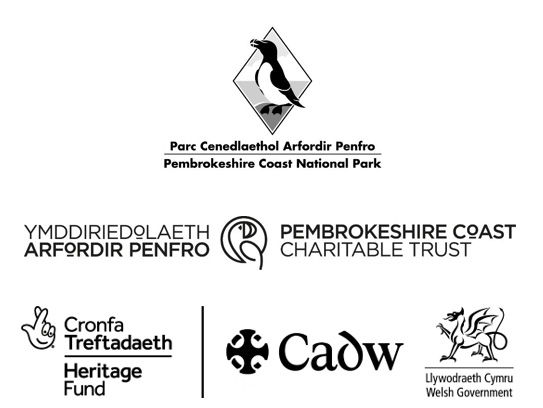
Appendix 1 – Digital Outputs Terms and Conditions
- release all grant funded Digital Outputs under our default licence, Creative Commons Attribution 4.0 International (CC BY 4.0) or equivalent, except code and metadata which should be marked with a Creative Commons 0 1.0 Universal (CC0 1.0). Public Domain Dedication or equivalent, Assets already in the public domain cannot be included in our required licence, so should be marked with a Creative Commons 0 1.0 Universal (CC0 1.0) Public Domain Dedication, or equivalent.
- No new rights should arise in non-original materials resulting from the reproduction of public domain works supported by grant funding. Digital reproductions of public domain materials, including photographic images and 3D data, should be shared under a CC0 1.0 Public Domain Dedication.
- be the rightsholder of any Grant funded materials you produce. Where other people contribute materials to the Project, or the Project makes use of pre-existing materials, it will be your responsibility to get permission from the rightsholder to apply our default licence,
- ensure that the Digital Outputs are kept up-to-date, function as intended and do not become out-of-date before five years after your project Completion Date, (or where the lead applicant is a private owner of heritage, for 10 years from the Project Completion Date.
- ensure websites and website content meet at least W3C Single A accessibility standard,
- provide us with the web address addresses (URL/s) of the site, or sites, that will host your Digital Outputs, and update these if materials are relocated,
- ensure free and unrestricted online access to the Digital Outputs.
Note: To ensure compliance with the above terms and conditions, PCNPA, PCNPT and any other relevant partners will retain full copyright ownership over any material produced by the contractor in connection with the work of this brief.

